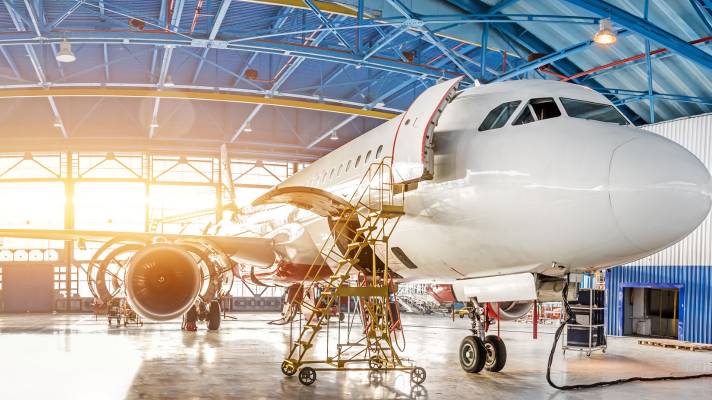
The aircraft redelivery – timeline and process guide
Returning an aircraft to its lessor at the end of a lease period is a complex and time-consuming process that requires meticulous planning and coordination across multiple departments. The redelivery process marks the final stage of the aircraft leasing lifecycle, and any missteps can have significant financial and reputational implications for both parties. As such, it’s crucial for the lessor and lessee to work together closely and understand the technical, legislative, and commercial aspects of the process.
In this blog post, we provide practical tips and outline key steps to help make the redelivery process run as smoothly as possible, including technical inspections, regulatory compliance, and financial considerations. By following these guidelines, both parties can ensure a successful lease return and avoid any unnecessary delays or disputes.

Lee Smith, Senior Technical Manager, flydocs
The pre-redelivery phase is a critical stage in the aircraft lease return process that typically begins 24 months before the redelivery date and continues until six to four months before the final transition. Early preparation is advisable to allow for unforeseen possibilities that may arise. At a high level, the following tasks should be considered and completed during this initial planning phase.
24 months before redelivery
The first 24 months before the redelivery date are an important time for lessors and lessees to begin preparing for the aircraft lease return process. The lessor should initiate the redelivery process by confirming the termination of the lease unless an extension has been applied for. At the same time, the lessee should carefully review the lease agreement in detail, paying close attention to the return conditions for the airframe, aircraft assemblies, and key components. It is essential to fully understand the technical aspects of the lease agreement to avoid surprises during the redelivery process.
Twelve to nine months before redelivery
The lessee should perform a lease contract interpretation, also known as Plain English, to identify the key points of the lease agreement and develop a detailed project plan for the entire process. This ensures that all internal stakeholders are aware of their responsibilities and helps to identify any potential issues or challenges. At this point, the lessee should consider appointing a project manager and/or redelivery team to oversee the process, which may require the assistance of outsourced support. It’s also essential to select and appoint the MRO facility for the redelivery check, ensuring an adequate timeslot has been agreed upon and allowing the MRO to begin preparing for the required work.
Nine to six months before redelivery
As the redelivery date approaches, several important tasks should be completed to ensure a successful redelivery process. These include:
- Conducting surveys of airframe, cabin, and cargo locations to identify items not meeting lease return conditions
- Consider completing a BSI of the engines and APU assemblies to identify issues that may arise during the final maintenance input and keep costs under control
- Completing a physical inspection of any airframe damage to identify repairs requiring rework before the transition
- Reviewing all embodied modifications/STCs to detect items required to be removed per the lease agreement. This may require further discussions with the lessor to reach an agreement for any modifications that may remain embodied
- Completing a build and audit of the redelivery aircraft records, whilst creating a corrections list of problem items
- Defining a detailed technical work scope (including any issues identified during the audits noted above) for the final maintenance input
Six to four months before redelivery
Assembling the definitive aircraft records becomes a top priority. To ensure swift data verification by the lessor, it is necessary to create a “redelivery book/binder” containing up-to-date status sheets supported by relevant documentation. Compliance files for Airworthiness Directives (ADs), modifications, repairs, and components should be prioritised as this phase can be time-consuming and labour-intensive. To complete this task smoothly, sufficient time should be allowed without any rush. Other important tasks during this phase include:
- Sharing the draft maintenance check pack and work scope with the lessor and stakeholders to identify and verify what needs to be included or removed during the final input
- Supporting material and logistics departments in ordering components and managing lead times
Four to two months before redelivery
As the redelivery date approaches, it’s essential for the operator to provide all aircraft records to the lessor for an advanced review. This step enables ample time for further discussions with the MRO regarding the maintenance input work scope and standards. It’s possible that new findings from the records audit may require changes to the previously agreed work scope. Therefore, it’s crucial to have open communication and collaboration with all parties involved in the process to ensure a smooth transition.
Two months before redelivery
The aircraft will be undergoing its final maintenance input at the MRO. Lessor representatives are expected to be on-site to physically inspect the aircraft and review the final maintenance records. Lessee representatives will be present to liaise with the MRO and assist the lessor with any queries that may arise.
This is also the stage where a final acceptance/test flight will be carried out, and engine high-powered assurance runs will be performed as required. Negotiations for final lease payments will take place during this period. Additionally, the final technical aircraft return data package will be completed and audited. In cases where necessary, the aircraft will be de-registered, and the export Certificate of Airworthiness (C of A) will be obtained. Finally, the lessor will sign the aircraft acceptance certificate, marking the official completion of the redelivery process.
Conclusion
Redelivering an aircraft is a complicated and necessary process that requires a high level of technical expertise and contractual compliance. To ensure a successful outcome, the operator should follow a structured approach that covers all the key aspects of the redelivery process. The operator should also establish clear and frequent communication with the lessor and other parties involved in the project. Engaging experienced staff or technical consultants can help operators navigate the challenges of the redelivery and ensure the optimal use of resources and costs. By following a structured approach and maintaining clear communication, operators can minimise the risk of penalties or claims and maintain positive relationships with their lessors. Ultimately, a successful redelivery process is essential for the long-term viability and profitability of aircraft leasing and operations.
